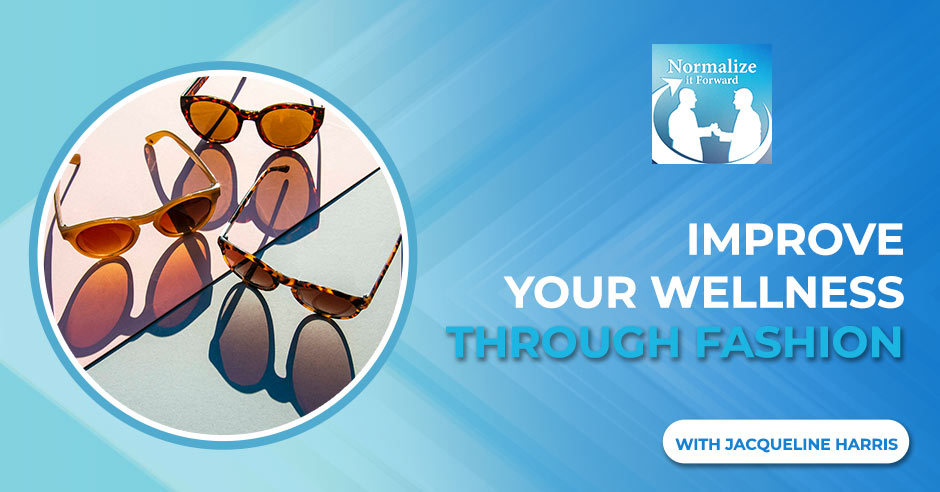
What you wear and how you show up has a direct impact on your personal wellness. Mental health advocate Jacqueline Harris is here to discuss how to use fashion to elevate your well-being and cultivate body positivity. Combining her fashion expertise with her psychology background, she talks about practical approaches to achieving self-acceptance, building self-confidence, and dealing with eating disorders. Jacqueline also discusses how to talk freely about suicide and why taking the easy route in life is not always the way to go.
—
Watch the episode here
Listen to the podcast here
Improve Your Wellness Through Fashion With Jacqueline Harris
I’m so excited to meet Jacqueline Harris. Jacqueline, welcome to the show.
Thank you.
You’re very welcome. Jacqueline brings over twenty years of experience in fashion, running ILoveTylerMadison.com. Alongside fashion, she’s got a Master’s degree in Counseling Psychology, works as a designer, and is an advocate for mental health. Her journey through recovery from an eating disorder inspired her to create a fashion line that promotes both style and self-acceptance.
Recognizing that feeling comfortable and confident in one’s own skin can be a challenge, Jacqueline is passionate about making clothes that serve as a bridge between fashion and well-being. With a deep understanding of the importance of body positivity, she creates pieces that empower people to feel good inside and out. Jacqueline, welcome. How are you?
Thank you. I love the intro. I was like, “Yes,” to all that.
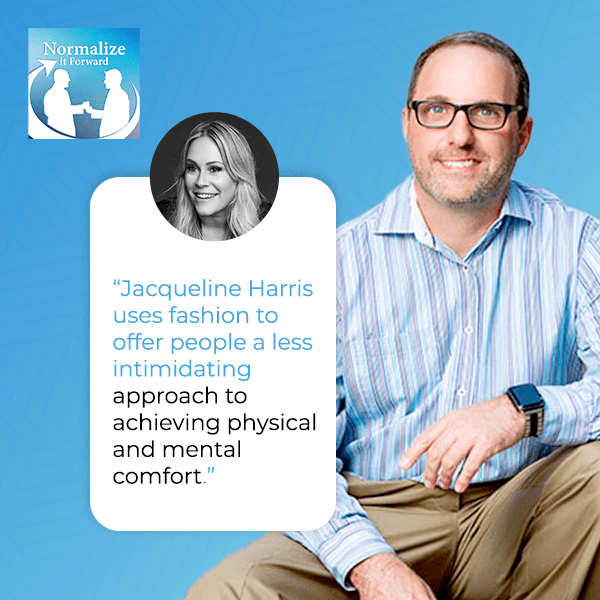
It’s so funny when I read intros. People are embarrassed or don’t know what to say.
I love it. I’m like, “Tell me more about what I do.”
From Counseling Psychology To The World Of Fashion
I’m thrilled to have you here. Your background and experience are very unique with a counseling psych background and a fashion background. I know, as my wife would attest, very little about fashion, but I certainly understand body image and mental health and wellness tremendously. As a therapist, I do have a subspecialty in eating disorders, so I’ve worked with a lot of both male and female patients over the years on various treatment levels around this topic. Let’s jump in. I want to pick your brain on some of these topics and get your viewpoint. As I’m reading your intro, I’m thinking, “That’s an interesting path.” What led you down the road as you got a counseling psych degree toward fashion?
I was always interested in psychology, but I ended up going back to school much later on in life. I was working in fashion before when all my friends were in university. It’s interesting. The company is named after our rescue dogs, Tyler and Madison. Years ago, it was my sister and me. Tyler was her dog. Madison was my dog. We wanted to create a line that was more than fashion. That’s where the altruistic side came in. We donate a portion of all sales to various animal charities.
We believe that helping others, and for us, it’s animals, gives you a sense of purpose. It takes you outside your negative head space. As we got older and evolved, and then became mothers, that’s when we started focusing more on the mental health side. We’re not ignoring the animals. We still do that. That’s when we started our mental health platform and wanted to normalize not being okay. We realized people don’t talk about it enough. That’s when I went back to school, did my undergrad, and then got my Master’s. That’s how the journey started.
I knew a bit about that last part. That honestly was what attracted me to reach out. I want to know more. Tell me more about your mental health platform. Can you give us a sense of that?
Sure. It’s on our website. We wanted to normalize not being okay. How it started was someone at the office, or maybe it was possibly me opening up about recovering from an eating disorder. Another person or another woman mentioned, “I had an eating disorder too. This was my journey.” Another woman also talked about it.
This is the first time that it happened to me as an adult in an open conversation with other individuals that you don’t know that well. They’re colleagues. To dive into something so personal was such a wonderful experience and made you feel less alone. It’s so isolating having an eating disorder. It was the most wonderful feeling.
It started so organically, saying, “We should do something about this and maybe offer tools or resources or even start posting not stories.” The first one was about a customer’s struggle with alcoholism. It wasn’t even related to eating disorders. It was to let people know that there are women in their 40s struggling with a drinking problem. That’s how it started.
I read that. I encourage everybody who’s tuning in to go to your website and read the letters you have on there. I was reading yours about birthdays as well.
I turned 42.
Happy birthday.
Thank you.
There’s so much to those, but one of the takeaways is they’re so honest. We live in a world where it’s hard to be honest about our mental health. Statistically speaking, the reality is anxiety is through the roof, depression is through the roof, and eating disorders are through the roof. People are struggling. I love that you guys took that leap of faith with each other in the office. I’m guessing it created a cool culture of connection.
That’s what I always say. The opposite of addiction is connection. It’s so isolating. You feel so alone. That’s why we wanted to normalize it. We’ve had two events. We had a workshop at a yoga studio. They were small and intimate. We talked about mental health and did some breathing techniques. We would love to be able to have group therapies once a week or even once a month. That’s the goal, to offer more resources to people, but for now, it’s the articles and tools online.
The opposite of addiction is connection. Share on XThere’s another company I’ve worked with in the past, a men’s company that has a line of fitness clothing. They do something very similar for men. They open up their stores periodically. They have these men’s mental fitness and mental health talks. It’s something very similar to what you’re discussing. I feel they are so needed. It’s such a cool opportunity. It’s not a therapist’s office. It’s not a hospital setting. For some, these are intimidating areas. It is for people to recognize, “The general public is dealing with this. It’s coming up a lot for people.”
The Toxic Side Of Social Media
Honestly, one of the reasons I developed this show is that I work with many young adults. The population that I see is mostly high school and college-aged students. I have a virtual private practice. We see students all over the country when they’re away from home. One of the things that we see often is students who haven’t been diagnosed but have symptoms.
In many ways, it puts pressure on the adults older than them to be able to role model this concept that not only is it okay to not be okay, but it’s okay to talk about it. Some people will hug you and join you. There are people you are shoulder-to-shoulder with in your part-time job that you have no idea are struggling.
I do know more from working with that generation. I feel terribly for teenagers. Social media can be toxic, but then it could also connect you and bring you together. Those are ways in which you could see other people struggling if they do share their stories, but I would assume, more likely than not, people are posting their best selves. That’s what makes it hard too.
Social media can be so toxic, but it can also connect and bring people together. Share on XI’m glad you said that. There are positives and negatives to it. Some of the negatives are upsetting to see, whether it be young people having popularity contests in many ways. I’ve seen young people post pictures with huge smiles on their faces, and they’re doing God knows what, and then I’ll see them that afternoon and they’re crying in my office. I try to get young people to understand regularly, “What you’re seeing is not real. What you’re seeing is a version of what that person wants you to see.” More importantly, it impacts us when we’re viewing that.
We’re trying to do a Mental Health Monday on the last Monday of every month. The tagline that I saw online and reused was, “I hope your life on social media is as amazing as you pretend it is to be,” or something. It’s worded better. That’s so true. More often than not, someone’s having the worst day, a big fight with their partner, or whatever it may be, and they post the opposite. It makes them feel better in some strange, for me, unrelatable way, because I didn’t grow up in the social media culture. Your life should be so private and everything has become so public and fake.
In the mental health realm or the wellness realm, you hit the nail on the head. You and I have referenced the point of life before social media. Teenagers, when you talk to them, eighteen, nineteen, twenty-year-old kids, don’t have that reference. It is tricky, and it does seem very real. For them, it influences them tremendously.
How Fashion Impact A Person’s Wellness
Social media is a huge factor. There is no doubt about it. Wellness is made up of so many different levels. Fashion, to me, is one of those levels. How a person feels in the clothes they wear determines a lot. You touched on it before, but where do those two topics collide for you in terms of outfits, fashion, and then also a person’s wellness?
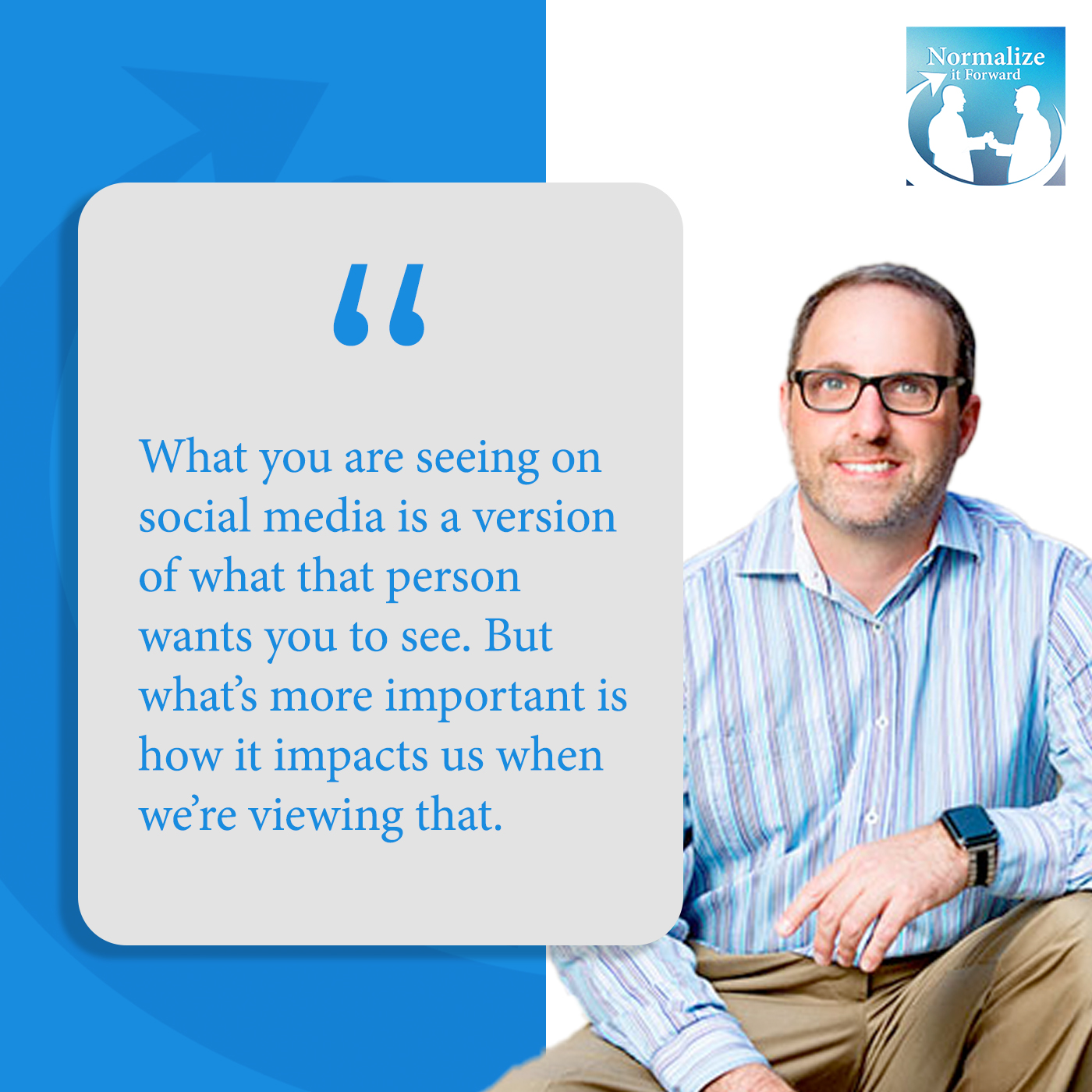
Personally for myself, having my weight fluctuate my whole life, when you’re struggling, whether it’s an eating disorder, depression, anxiety, or everything that comes with it, as trivial as it seems when you have to get up and go to school, go to work, or function, when you don’t feel good in your clothes, it’s another added layer that you don’t need on top of trying to survive.
That’s where my sister and I started the line. It was skirts, shorts, and pants. Everything was pull-on. It was years ago. The Lululemon craze started and people were wearing leggings. They weren’t very appropriate to wear other than the gym. I found it strange that people would go to dinner in leggings. We took that concept, which is popular in maternity and for older women, as a pull-on panty. It’s very popular.
We said, “Let’s make all of our pants like trousers with pockets and a fake button, but let’s make everything pull-on so you feel comfortable.” There’s the top button challenge. If you’re sitting in your jeans and your stomach is rolling over and the clothes are rolling down it, it’s so uncomfortable. That’s how it started. We were like, “Let’s make flattering, stylish pants that are comfortable so when you put them on, you feel good.”
Talking Freely About Suicide
I was thinking as you were talking about leggings, “Things have changed a lot in ten years.” Comfort is huge. And physical comfort and mental comfort collide right inside of us. You said it best that we take that with us every day, whatever we’re doing. That’s important. Tell me. I’m curious. Your staff sounds like a healthy bunch of people who share and connect. I’m wondering. In terms of viewpoint, I’m assuming your staff, age bracket-wise, are in their 50s.
It’s 35 to 50.
I imagine everybody has a little bit of a different viewpoint on mental health and wellness with some overlap.
We’re pretty aligned talking about it. We also come to be of that age, especially some few other colleagues around my age. It’s strange. In our culture, it is common that you are more avoidant. You don’t talk about your personal issues. It was very private if you were going to therapy. It is strange for all of us to come out there and so openly talk about it, but we feel that there’s a need that we’d have to normalize it.
As a side note, there were quite a few suicides in Montreal around individuals our age. That was shocking to all of us, whether we knew of them or some knew them personally, to think you don’t know anyone and they suffered in silence. That also got the ball rolling about like, “Forget it. Forget my shame. I want to talk about this if it could help one person know that they’re not alone.”
What an immense statement. You’re right. The suicide rate in young people is increasing tremendously and in a scary way. To me, that’s the worst-case scenario for somebody who’s struggling and certainly struggling alone. They go down that path. For so many people, there’s that stretch of time. A lot of times, it’s a long stretch of time where they’re feeling depressed and anxious and they’re having trouble, but they’re not saying things to people. They’re not letting people know. It could also be that the people they are letting know are their friends, and their friends are struggling also, so they keep it contained.
One of the mantra statements I end up repeating all the time for young people is finding a healthy adult to connect with and to let them know. Healthy adults can come in all different shapes and sizes in terms of who they are. They could be professors, coaches, therapists, neighbors, aunts, uncles, friends, friends’ parents, and all different types of people. It is letting an adult know, and that adult will hopefully help them get to some level of assistance.
You’re right. It’s tragic to hear that it’s happening your way, but honestly, it’s happening in so many different areas of the world. It’s the reality. It’s something we need to pay attention to. Suicide is one of those words. People don’t like talking about it. It’s a scary concept to think about. I always say to families, “If you can’t say to your pubescent kid, ‘You can’t talk about sex,’ then suicide is going to be challenging. Trust me, those topics are a lot easier to talk about than going to a funeral.” It was something along those lines.
There’s so much stigma with suicide. I find when you open the door and you talk about it, whether it’s to the family members who live through it, there’s so much gratitude because people shy away from it. It’s an illness. I’ve overheard people say, “How could that person do that? It’s so selfish. They had kids.” It enrages me. I say, “They’re sick. Would you say that to someone who had cancer?” People don’t understand it either.
Be open about discussing suicide. There is so much gratitude when you do this because many people shy away from it. Share on XThat’s a big part of it. It is interesting, people’s reactions, when that happens. Sometimes, people will get angry. Sometimes, people feel insulted. There’s a whole range of reactions that’s hard to understand. I agree with you. The topic itself could be talked about more. For those individuals who are not suffering from depression or anxiety, it’s hard to understand. It’s complicated.
The number one thing that I put out there around this topic is to connect. Connect with someone. Find somebody to connect with and make sure that that person has your best interest in mind. Young people are suffering in silence. Those people are at risk. I’m glad you brought the topic up. Social media gives us our viewpoint of it. Certainly, there have been a number of very public suicides of celebrities over the last many years that have called our attention to the topic. It does for a small period of time, and then we move on from that.
We very quickly move on. People forget. That’s why it’s important to keep the conversation open. As we’re talking, I’m thinking, “We should do an article maybe about suicide. I’ll put it out there if someone wants to send it in.”
I’m thinking in my head of the shows that I’ve done. It’s amazing how much this topic gets talked about. I interviewed a young lady who is a suicide survivor. You don’t hear about that often, but to listen to the impact and where she was at. She’s 24. As she tells her story, it’s a very common story. There are lots of kids out there that are at risk. I agree with you. As adults in our forties, fifties, and sixties, our challenge is to keep that conversation right there. If we’re able to reduce even one person from taking that leap, then we’ve assisted people.
Avoiding The Easy And Familiar Route
Let me ask you this. In terms of wellness, wellness is one of those areas where we talk about coping skills, parenting, mind-body, different techniques, and so forth. As therapists, we talk about that in counseling. I’m wondering. When you hear the phrase mental health and wellness, what does it mean to you? What comes to mind?
In terms of wellness, for some reason, I always think of the wellness industry. My mind automatically goes to social media. I think of living a happy life in terms of mental health and wellness, and if you have that under control. Mental health is a huge umbrella. Many things fall under it. There are a lot of misconceptions. The main message I would want to get across from discussing mental health would be that it’s so important to work at it.
When people go to the gym, they want to go as much as they can to feel good. It’s the same with mental health. Don’t feel ashamed that you don’t feel okay. People didn’t have the proper word for it. They’re like, “Something feels off. Something is amiss. Something doesn’t feel right,” whether that’s anxiety or depression.” There’s so much to discuss. Did that answer that?
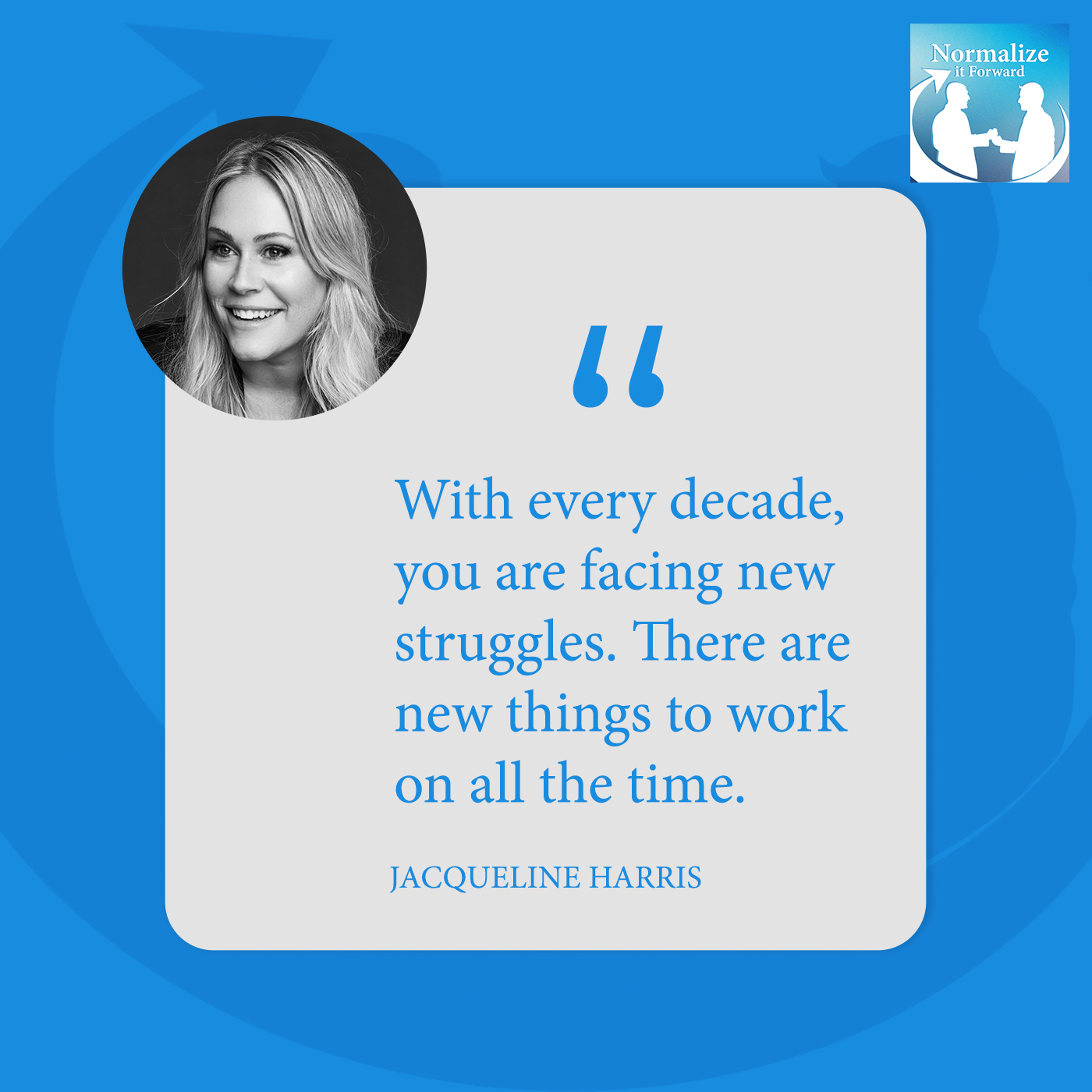
It does. You got me thinking about a few things. I missed this earlier but I want to double back to it for a minute. I want to thank you for your honesty because so many people our age when they talk about their own mental health say, “I struggle with depression. I struggle with happiness. I struggle with anxiety. I struggle with eating disorders.” You’ve had the courage to do that and I applaud you for that. I admire that.
Thank you.
You’re welcome. It’s awesome that you’ve done that. I feel like that does serve as a role model for young people to hear adults say things like, “On the outside, I may look a certain way and I may act a certain way. You may even see me online, but I need you to understand that I’ve had my struggles and I currently have my struggles.” That’s honest. That’s wrapped into mental health and wellness. You’re right. There are a lot of different pieces to it. I like what you said. It’s 100% accurate. It’s one of those things we can’t put down and stop working. It’s like our oral hygiene. We can’t stop brushing our teeth. That’ll be a problem.
That’s what people don’t talk about enough. It’s a lifelong journey. There are ups and downs. When working with young kids, I often say, “It’s like the weather. You can’t have sunny days all the time. It’s going to rain. There are going to be storms. That’s part of your mood and your emotions. Know that it’s okay. It’s a constant journey.” I feel like with every decade, let’s say, you’re facing new struggles. There are new things to work on all the time, like your body changes when you go to the gym. You’ll be doing different workouts and changing it up. It’s the same thing.
That’s a very healthy way of looking at it. Whether it’s counseling, going to the gym, or trying to force yourself to talk openly to people or healthy habits, it is looking at those and saying, “These aren’t things that I do every Tuesday. They’re things that I should be doing all the time.”
When I think of wellness, it’s about the easy route. When you try to take the easy route, life becomes harder. It’s so simple. Working out is hard, but not moving your body will end up harder. It goes on to say a bunch, like easy always has a cost. That’s where I find the familiar hell. When people get so used to struggling, that becomes their level of comfort. Getting to the root cause of why you don’t feel well will make the difference, but getting there is hard, if that makes sense.
When you try to take the easy route, life becomes harder. Share on XIt does.
It should be easy, but it’s not. It takes a lot of work to get there.
You got me thinking when you said that.
That was a lot. I’m sorry.
That’s deep. I appreciate you telling me that. I’m going to repeat that. Easy comes with a cost. I’m even thinking about counseling. Why is it that so many young people need counseling but don’t get it? The simple answer is that they don’t want to do anything that requires that type of work. A lot of people in their forties, fifties, and sixties can recognize that all of the things that we do that are fruitful in life require hard work.
It’s easier to scroll on Instagram for hours than to take twenty minutes to journal or go to an hour-long therapy session. It’s easier to drive to McDonald’s and get fast food than it is to make a stir fry or whatever it may be. For a lot of individuals, they take the easy route. Even with addictions or eating disorders, it’s familiar. You go back to that familiar hell and unfamiliar heaven because it’s easy. It feels strange to stray from what your nervous system knows.
It’s interesting how so many of my patients have been in that familiar world where it’s hellish and it’s uncomfortable but it’s familiar. Changing from that can take a lot of courage. It’s interesting. I’m sure you’ve seen this over the years with people that you’ve known. I’ve had people say to me in their teen years, “I didn’t think I was going to live until I was 21.” I’m talking to them at 26 or 27 and they’re telling me that. They’re talking about having a family. You hear those things and you’re like, “Life does shift and change.”
Sometimes, when we think one thing at a moment, we don’t realize that our thoughts are going to shift and change every couple of years, even in terms of what our future looks like. I appreciate you sharing that. The “familiar hell” is an interesting phrase. I’ll remember it because it’s true. When people are suffering, that’s where they are. One of the biggest reasons I felt so passionate about connecting with people and doing the show is I wanted people to understand that those types of feelings, oftentimes for young people, are normal until they recognize, “There is a healthier normal. There’s a different space that you can be in. They’ll remain in that hellish world.”
That’s important to talk about. Tying it back to social media, influencers and people are comparing our lives to make it look so easy. It’s not. It’s an illusion too.
No matter who I meet, no matter what they’ve done, no matter what their bank accounts look like, and no matter how public they are, I’m always reminded we’re all human beings and we all go through very similar things. As a result, we’re all susceptible. The social media scrolling is a bit of a Pavlovian-type training that we go through where we start to think, “Everybody else has their shit together. What’s wrong with me?” I’m glad you said that. That is spot on.
Jacqueline’s Nominee For Next Guest
First of all, thank you so much for your time and energy and for talking about these topics. I love your viewpoint. I love your honesty. I appreciate you bringing to the table what you did. Part of the show is I usually put people on the spot a little bit toward the end of the interview and ask them to nominate a friend, a coworker, a relative, or someone who they think would be helpful for us to interview next and have on the show. Any thoughts in terms of people that you might nominate?
I do. I have my girlfriend Brittany. She’s on our Tyler Madison Instagram feed a lot. She looks very good in our clothing. She’s a makeup artist and is also open about her struggles with mental health and loves talking about it openly. She’d be an interesting perspective, especially working with women in the beauty industry and doing makeup. She has a lot to say about that. I could give you her information.
I’ll get that from you offline. I appreciate you nominating her. I’m excited to talk to her. It sounds like she’ll have a different viewpoint and give us a sense of her perspective. I appreciate you nominating her. I look forward to getting in touch with her sometime soon. Again, thank you so much. I know you’re busy. I appreciate you making the time.
To those of my readers who didn’t catch it originally, it is ILoveTylerMadison.com. Look them up. They have awesome stuff going on on their website. They have great clothing that they are putting out there, and even more fantastic people behind the clothing. Thank you so much. I appreciate it. You have yourself a wonderful rest of the day.
Thank you so much. You too.
Bye-bye.
Important Links
About Jacqueline Harris
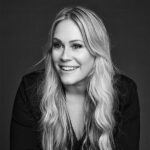 Jacqueline brings over 20 years of experience in fashion, alongside a master’s degree in counseling psychology, to her work as a designer and advocate for mental health. Her journey through recovery from an eating disorder inspired her to create a fashion line that promotes both style and self-acceptance.
Jacqueline brings over 20 years of experience in fashion, alongside a master’s degree in counseling psychology, to her work as a designer and advocate for mental health. Her journey through recovery from an eating disorder inspired her to create a fashion line that promotes both style and self-acceptance.
Recognizing that feeling comfortable and confident in one’s own skin can be a challenge, Jacqueline is passionate about making clothing that serves as a bridge between fashion and well-being. With a deep understanding of the importance of body positivity, she creates pieces that empower people to feel good, inside and out.

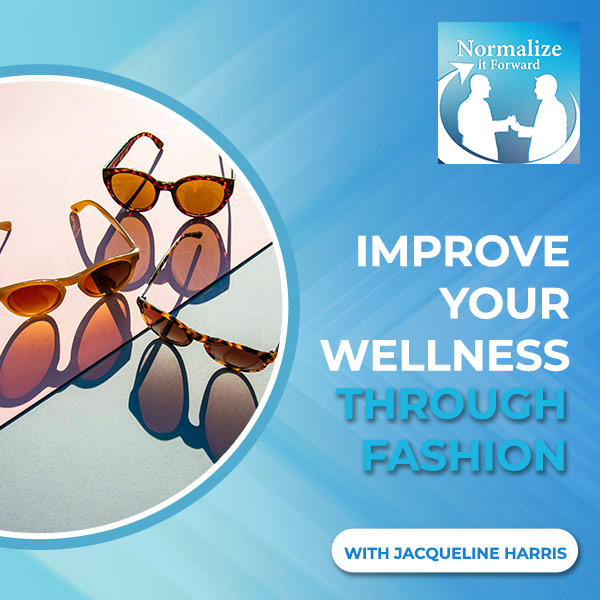


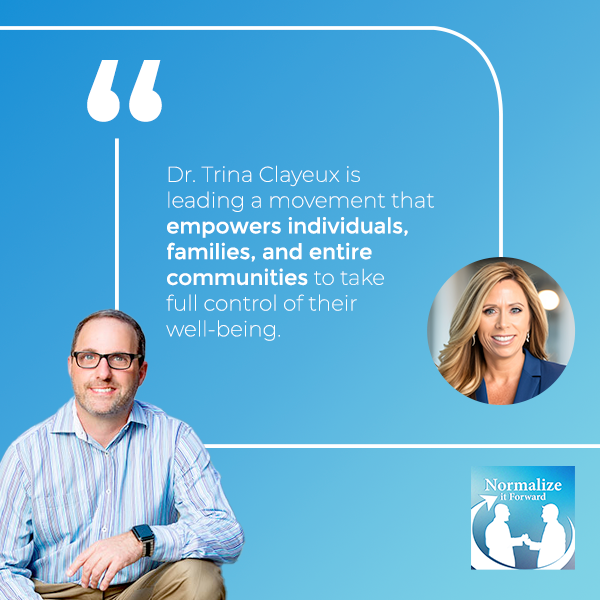
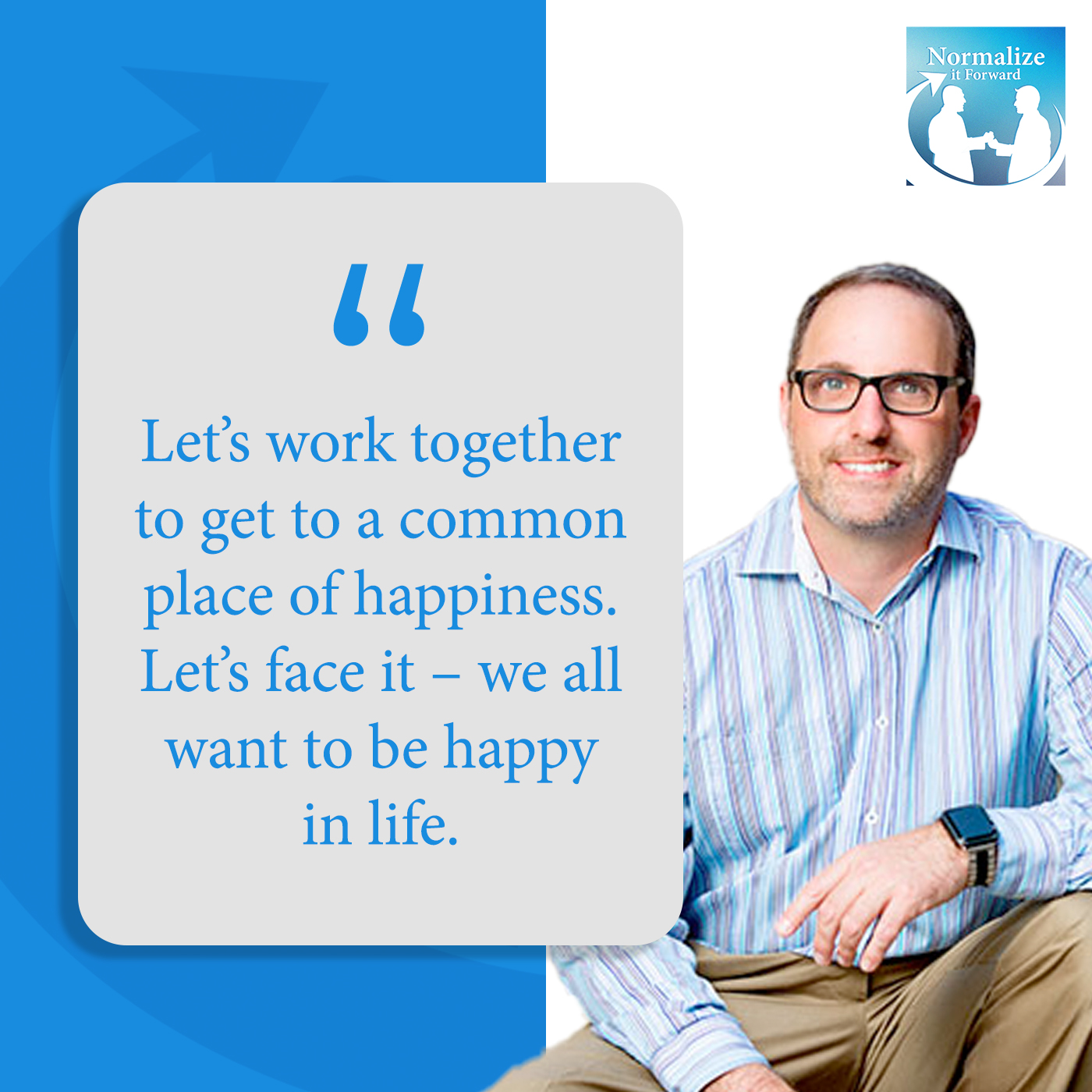
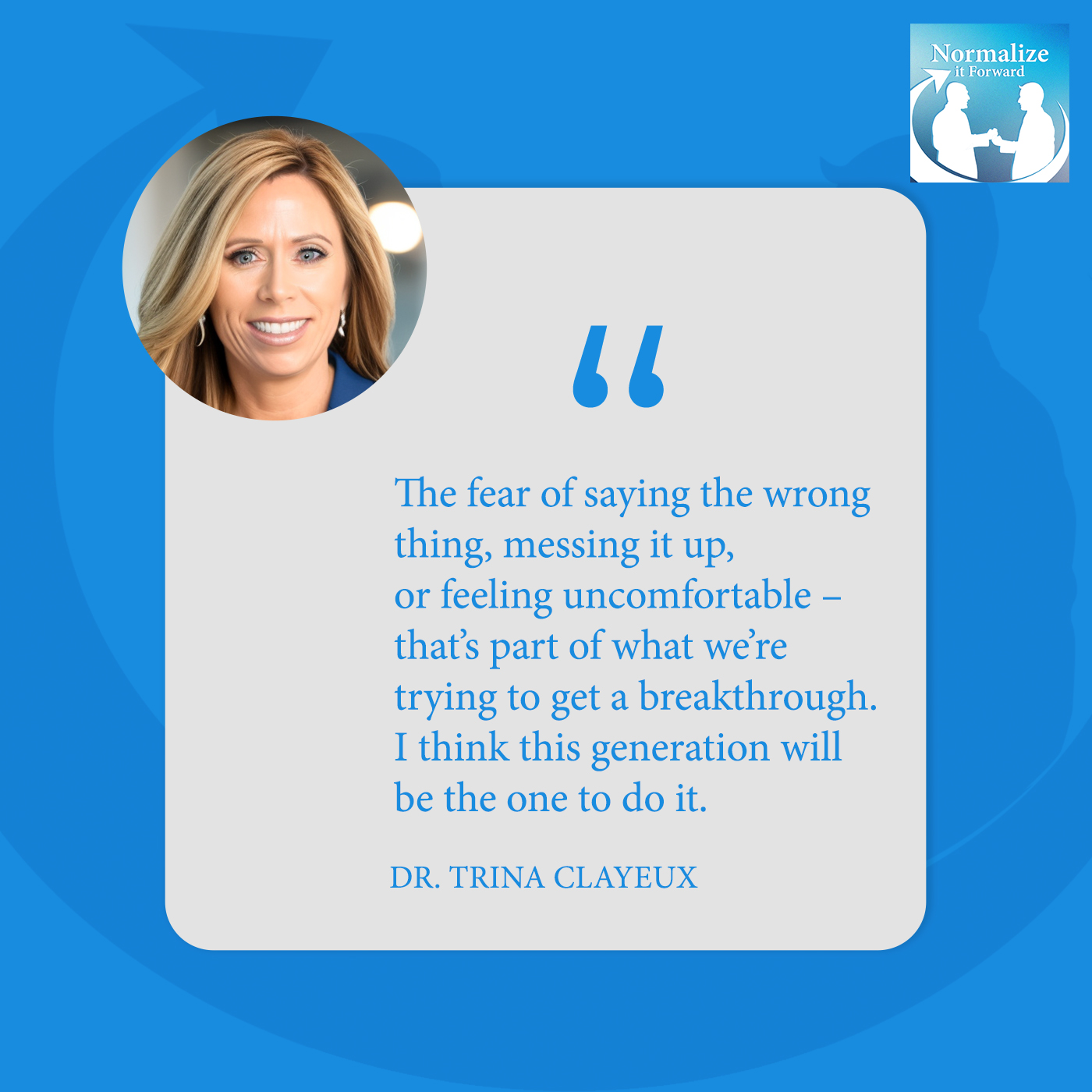
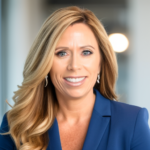 Dr. Trina Clayeux brings a wealth of executive experience in workforce development and mental health to her role as CEO of Give an Hour. With a proven history of visionary leadership and innovation, she has made significant contributions in enhancing access and the delivery of vital services within her field.
Dr. Trina Clayeux brings a wealth of executive experience in workforce development and mental health to her role as CEO of Give an Hour. With a proven history of visionary leadership and innovation, she has made significant contributions in enhancing access and the delivery of vital services within her field.